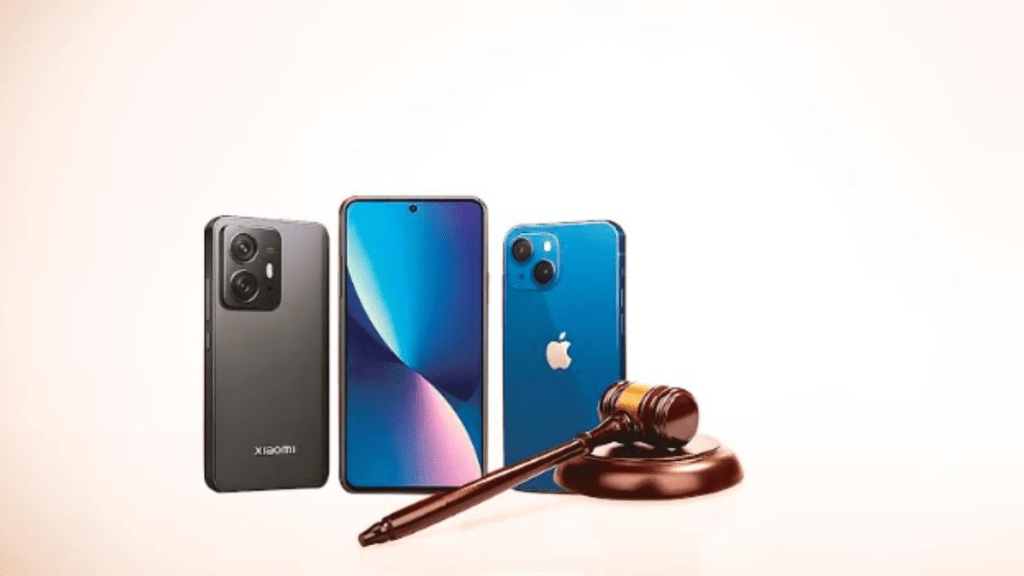When two of the world’s biggest brands decide an ad has gone too far, you know the gloves are off. Tech giants Apple and Samsung have reportedly hit Xiaomi with cease-and-desist notices over campaigns that pitted its devices against theirs, accusing the Chinese challenger of crossing the line from comparison into disparagement (by belittling, mocking, or damaging their brands’ reputation).
The episode marked more than a spat over specifications; it underlined how high the stakes now are in India’s consumer market. While the notice itself is not a court order, it signals an intention to escalate to litigation if compliance isn’t achieved, says SFLC.IN.
In theory, comparative advertising is legal in India. Brands are allowed to point out differences and even suggest superiority, provided the claims are factual, objective, and not misleading. But in practice, the execution often tips from cheeky to combative. Ambika Sharma, founder & chief strategist at Pulp Strategy, says why such advertising is a tightrope walk: “Comparative advertising works when it is sharp, fact-based, and respectful. It becomes a liability when the tone crosses into disparagement.” That liability, she adds, can come in many forms — litigation, regulatory scrutiny, or consumer fatigue.
For challenger brands like Xiaomi, that has less than 1% of the smartphone market with a Rs 50,000-plus price tag (IDC), the temptation is obvious. “Challengers lean on provocation to break clutter and create immediate buzz,” Sharma says. But attention can be a fickle currency. “If the brand narrative becomes only about attacking a rival, it undermines credibility in the long run.”
That credibility gap is particularly dangerous in premium categories, where aspiration and trust are as important as features. Yasin Hamidani, director at Media Care Brand Solutions, cautions that ridicule can easily backfire. “The advantage of provocative recall can quickly be outweighed by reputational harm,” he explains. “Consumers may enjoy the drama, but they do not necessarily reward brands that attack rivals. Humour and wit land better than hostility.”
Shortcut to courtroom
The legal playbook is well defined. A cease-and-desist notice is not a court order but a pre-litigation demand. Bishwajit Dubey, advocate at the Supreme Court, calls it “a formal legal document demanding the immediate cessation of a specific activity.” In the realm of comparative advertising, they are issued when ads are alleged to cross into trademark infringement, disparagement, or misleading claims. For the recipient, there are three broad choices: comply by withdrawing the campaign, counteract by asserting that the claims are fair and factual, or litigate to defend the ad. Courts have drawn a consistent line: comparison is permissible, ridicule is not.
Advocate Junaid Qureshi, partner and head of litigation at Chambers of Tushar Kumar, points out that ignoring a notice can escalate matters quickly. “If ignored, the sender may approach a civil court to seek injunctions, damages, or even corrective advertising,” he says. While courts maintain neutrality, market leaders often succeed in securing faster relief. Their ability to demonstrate irreparable harm to brand equity weighs heavily in judicial assessments. For challengers, by contrast, the room to manoeuvre is narrower: if the campaign strays from fact into mockery, it is unlikely to survive scrutiny, say experts.
Legal path is not the only one
The legal path is not the only one. Industry self-regulation plays a complementary role, with the Advertising Standards Council of India (ASCI) serving as the first check post. Its rulings are not binding, but they carry weight with both companies and consumers. Dubey notes that ASCI’s framework “encourages advertisers to voluntarily adhere to principles of honesty, fairness, and responsibility”. Qureshi describes it as preventive rather than punitive. “It entertains complaints from consumers and competitors and directs advertisers to withdraw or alter campaigns. While not binding, its decisions are influential,” he says. That role has only become more significant since the Central Consumer Protection Authority was given powers to levy fines and bans, creating a layered system of oversight.
The Xiaomi episode is part of a larger pattern, say experts. Comparative advertising tends to flare up most visibly when markets are mature and growth slows. India has seen this before. PepsiCo went to court against Hindustan Coca-Cola after a Thums Up commercial mocked Pepsi drinkers as “bachche” or kids. The court ruled that puffery was permissible, but ridiculing consumers of a rival brand crossed into disparagement. In 2014, Hindustan Unilever faced its own setback when a Lifebuoy ad implied that Dettol users were unsafe. The court struck it down, reinforcing the line between fair comparison and unfair denigration.
While smartphones and televisions are the current flashpoints, the dynamic applies more broadly. “When the market is mature and upgrades are incremental, the fight for share becomes zero sum,” says Sharma. “Ad wars become the shortcut to grab attention when differentiation feels thin.”
Experts believe comparative ads are unlikely to vanish. But the risks are higher than ever. Consumers may laugh at a dig, but they rarely build loyalty on the back of negativity. Regulators are more active, and courts are quicker to intervene when brand equity is at stake.
